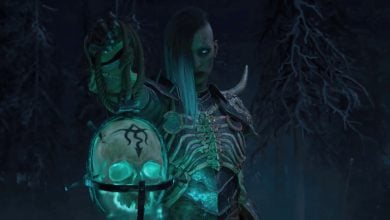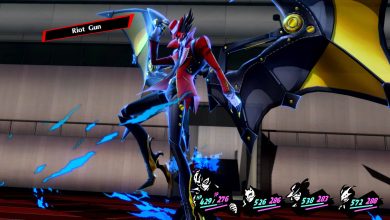Story Highlights
- Into the Emberlands is a cozy rogue-lite adventure that began as a tile-based prototype.
- The art style is led entirely by one full-time artist.
- We interviewed Lead Designer Maurice Alain Hagelstein via email.
Into the Emberlands is a cozy rogue-lite exploration game that sends players wandering through ever-changing biomes on a mission to rescue lost villagers and rebuild a mysterious world. With its blend of charming visuals, smart progression systems, and low-stress mechanics, it’s a refreshing take on the genre, one that encourages exploration without the usual pressure.
To learn more about how Into the Emberlands came to life, we spoke with Maurice Alain Hagelstein, the CEO of Tiny Roar and one of the lead designers behind the game. The following transcript is from an interview we conducted a while ago, so some of its parts are expected to be outdated.
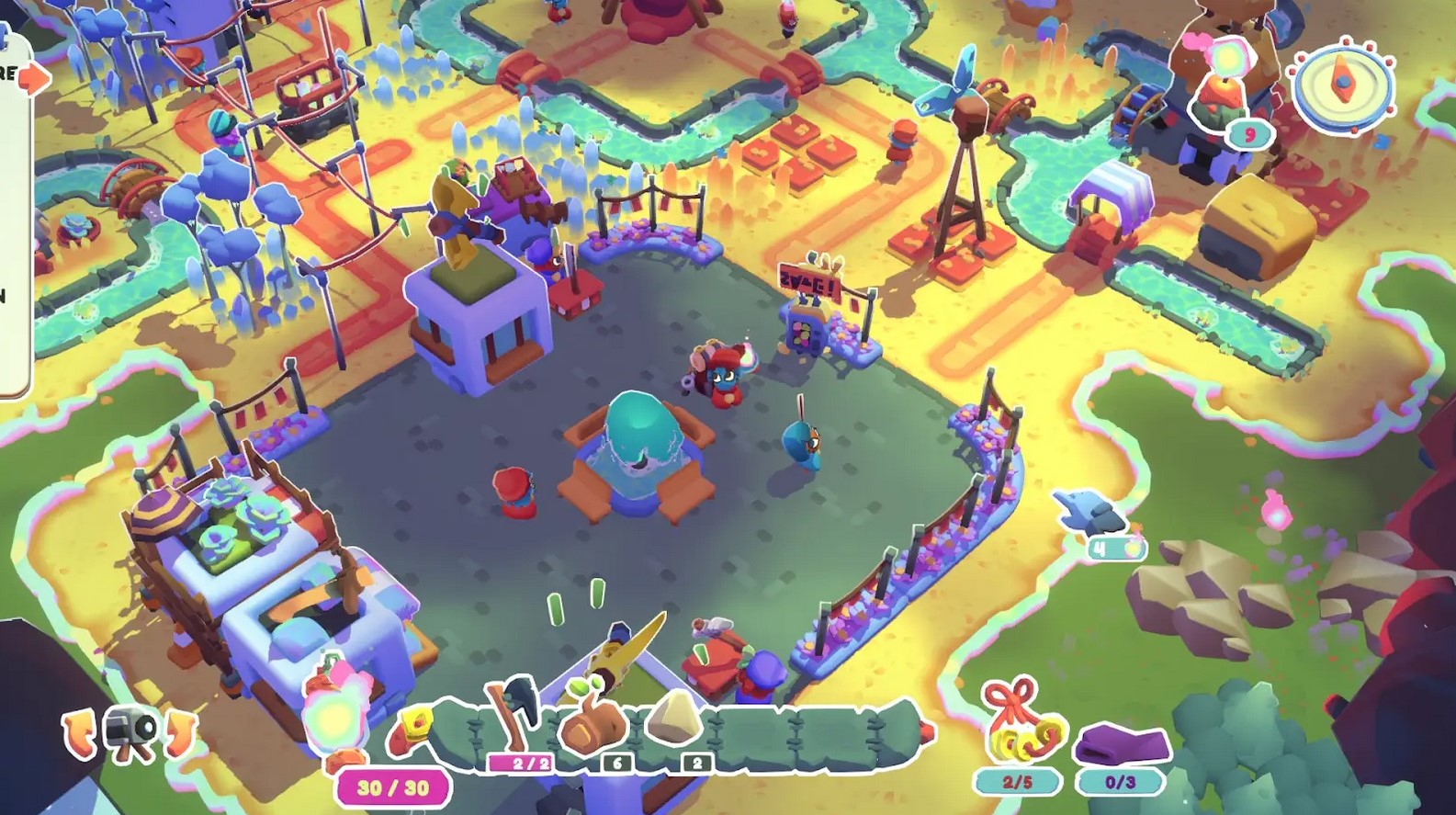
My name is Maurice, and I am the CEO of Tiny Roar and one of the game designers on this project and the person who wrote all the texts that you skip. But I am just one of the many lovely people who made this game possible.
The whole process of “Into the Emberlands” was very iterative. Before the game was called “Wanderful”, it was called “Of all stories left…”. Each iteration had a different approach. Daedalic gave us complete freedom and trust to do what we thought could work, and we were searching for a genre mix that players wouldn’t expect and that they could fall in love with. While OASL was more inspired by games like Loop Hero, Wanderful had players place tiles to venture forth as much as possible.
It was fun, but not fun enough, and a lot of the world’s logic felt forced. That’s how Emberlands formed. We looked at everything we had built and thought, what would be something that everyone would understand? Why can I only walk a certain distance? What would be a goal that each player, with any cultural background, would understand? To get these answers, you need to let players play your game. And the feedback from the Wanderful demo and the streams online helped us understand what things we needed to re-focus on.
Game Over conditions. Initially, we wanted to create a game that you could play forever without any clear goal. Just creating cute little worlds. But we saw right away that players enjoyed the initial few minutes of these approaches, but didn’t care to return. So we amped up the stakes and made decisions count.
The good thing about procedurally generated worlds is infinite possibilities of cool moments, and the downsides are infinite possibilities of really unfun moments. You have to create deterministic rules on how the world is created, so minimize the chances (they will never be zero) of a bad time. At the same time, everyone has a different journey through the Emberlands and may encounter certain biomes under completely different circumstances. We wanted players to have a personal story playing this game (hence the books as save files) and share them with friends. It is also tied to the narrative, as the Miasma is transforming and shifting everything it touches.
I don’t want to spoil them, actually, as finding a new biome should always feel like something special. I can just say that with each biome we created, we wanted to mix things up not only visually, but especially gameplay-wise. The starting area is all about removing obstacles and creating pathways, while others reward you for solving tasks with rewards that almost break game balance, while others need a lot of prep time before you even enter, because they are so dangerous.
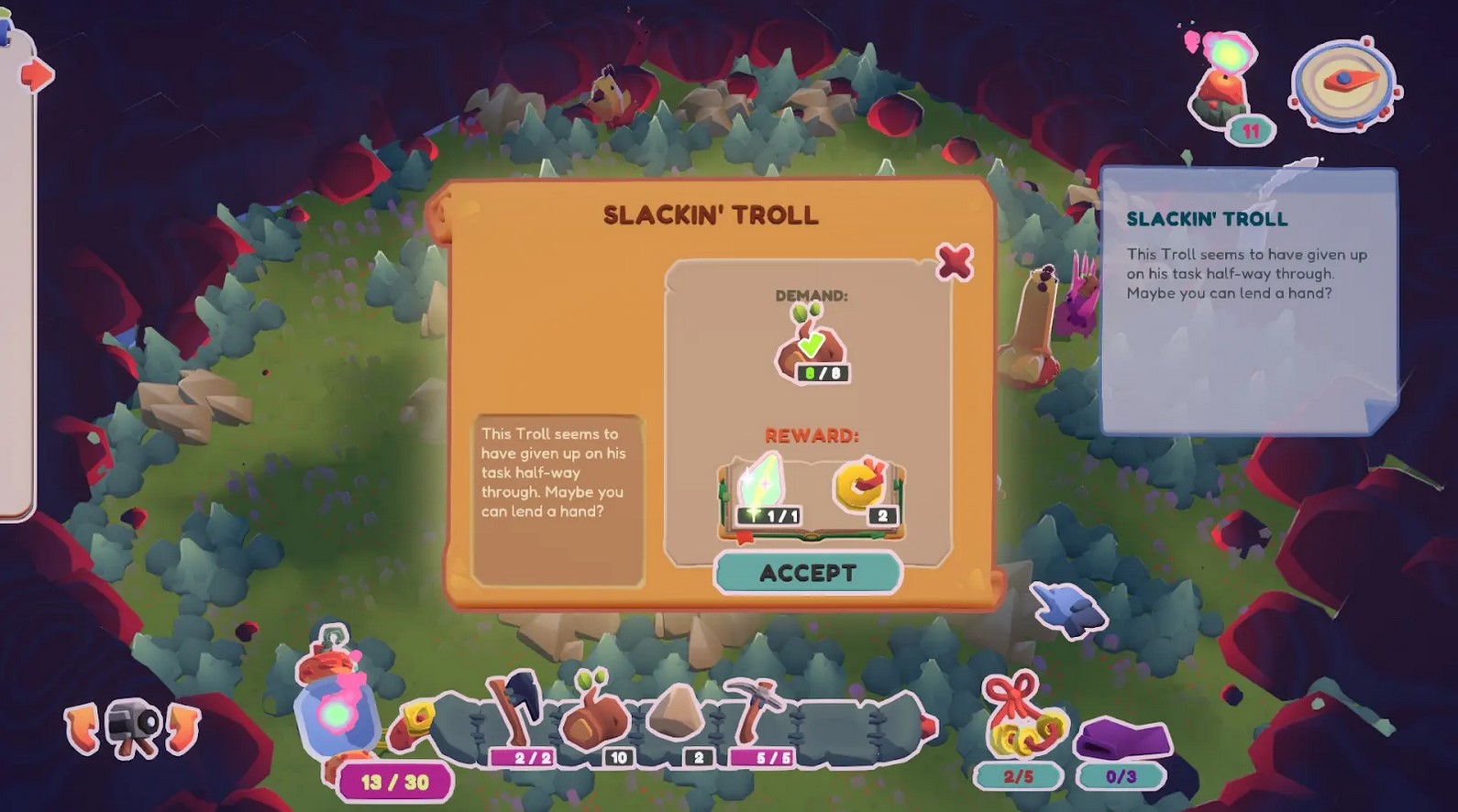
Every Knack you bring home to the village will eventually help rebuild the village. Some might even open up workshops where you get tools and upgrades for free. We know that roguelikes can feel punishing, especially when you lose progress. But the village is the persistent element of the game. Imagine it like the level bar in other games, which unlocks catch-up mechanics. So when you lose, you never start completely from scratch: Simply visit the local shops, and people will thank you for your help and make your adventure easier.
Jonas, who pitched the initial idea for the game, is the lead and actually the only full-time artist we have on this game. So everything you see went through his hands. Jonas draws inspiration from all things pleasant, melancholic, yet beautiful and quirky. So you might spot inspirations from Studio Ghibli, Outer Wilds, and much more, but everything is basically Jonas’s own style, which you will also see in other Tiny Roar games, but also his solo dev escapades in the future.
We try to look at established rules in game development and try to ask ourselves, Why is every game like this? Our upcoming “Lou’s Lagoon” rethinks a lot of farming game mechanics, which eventually led to the game becoming an adventure and not a simulation. The same happened with Emberlands: I always asked myself why there are so many people who don’t enjoy roguelikes, while they are one of the most popular genres in the current gen. We looked at those staples, like grim dark setting or painful punishments, and tried to twist them and make them more approachable. So if you never liked rogue-likes, this could potentially be your first cozy toe-dipping experience.
First of all: No gore. If you lose, your character gets lost and can be found with your next Knack. The Emberlands are a whimsical and odd place, so at no time, you should feel like any pixel gets hurt in the process of you playing the game. Additionally, no extrinsic stress. You can take your time and think about your next step as long as you like. A strength of cozy titles is that you have full control over your experience, and we tried to bring this into the rogue-like genre.
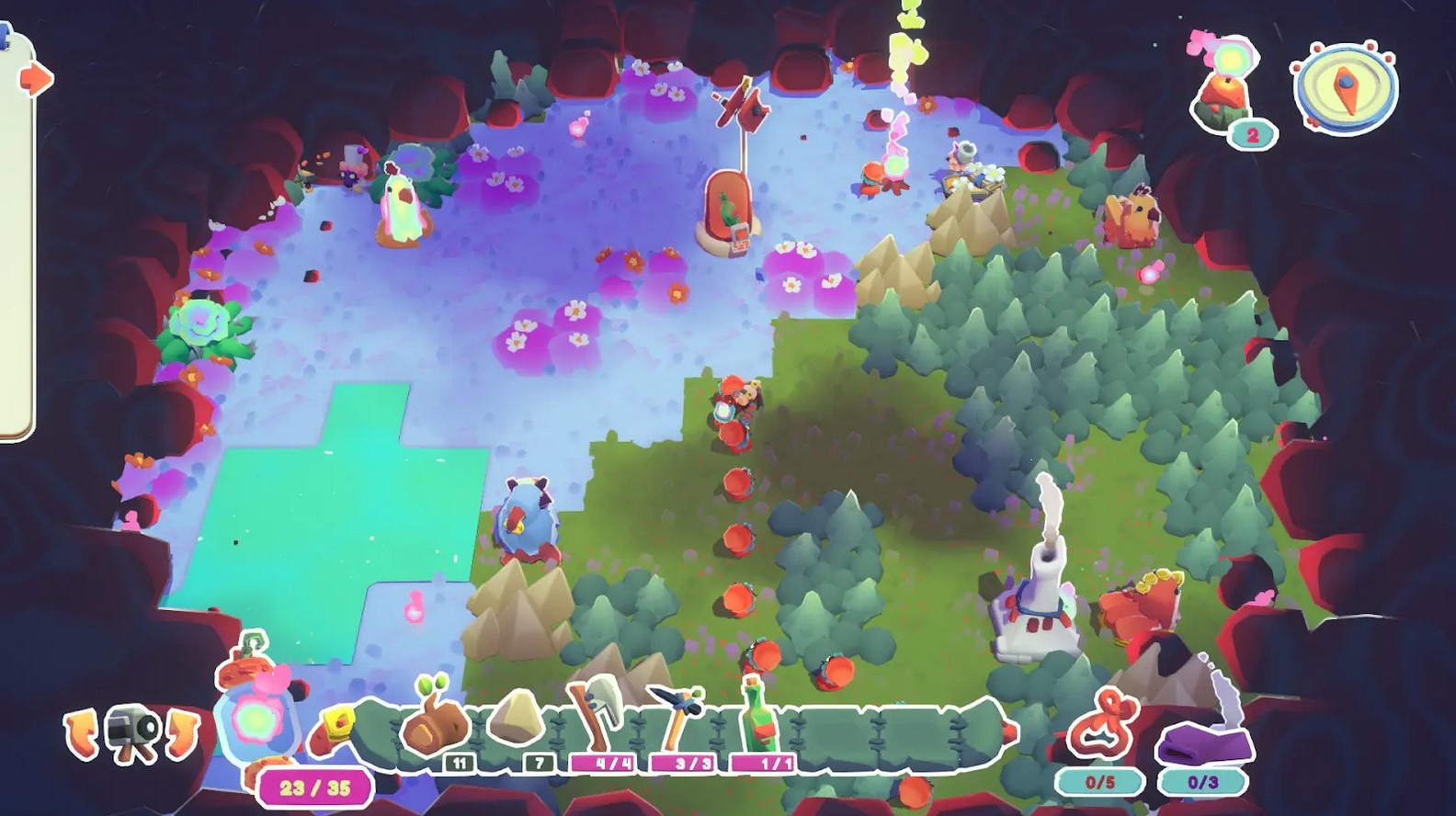
We saw people play the game so different that we actually believe the plan worked out. Some people work their way circular through the world, always making sure to replenish their lantern, even though it is already full, while others march headfirst into trouble and deal with problems, left and right. And that is the beauty of it: You can’t play the game wrong, as it allows for all play styles.
The love and craftsmanship put into this game. I think we are still so disconnected, players and developers. Sometimes I read articles from professionals that berate games, almost in a sense like “Why didn’t they simply make the game better?”
Everything that you see in a game takes time. Planning. Failing. Improvement. Frustration. Bliss. And this project had everything mentioned above. But most of all, people who really wanted the game to be fun and something unique.
Personally, I am just happy when I see people chuckle at the silly texts I wrote.
From the very first prototype that has NOTHING to do with the current game, it would be almost 3 years, with the team size ranging from a minimum of 2 to 5 people working full-time on it. But Jonas is on it from start to finish. Currently, we are preparing everything to bring the game to more players out there. We just got Steam Deck approved, which is something I am really happy about, because I really think the game is made for portable gaming. And who knows where the game will land next?
I just want you to enjoy your time in the Emberlands and know that we appreciate every feedback we get, as we are actively working on the game and are improving it almost on a bi-weekly basis. And there is a big update on the horizon that we are pretty excited about, as it brings rewards to players that really take on the bigger challenges, as well as something that makes the Emberlands bigger and more… hot.
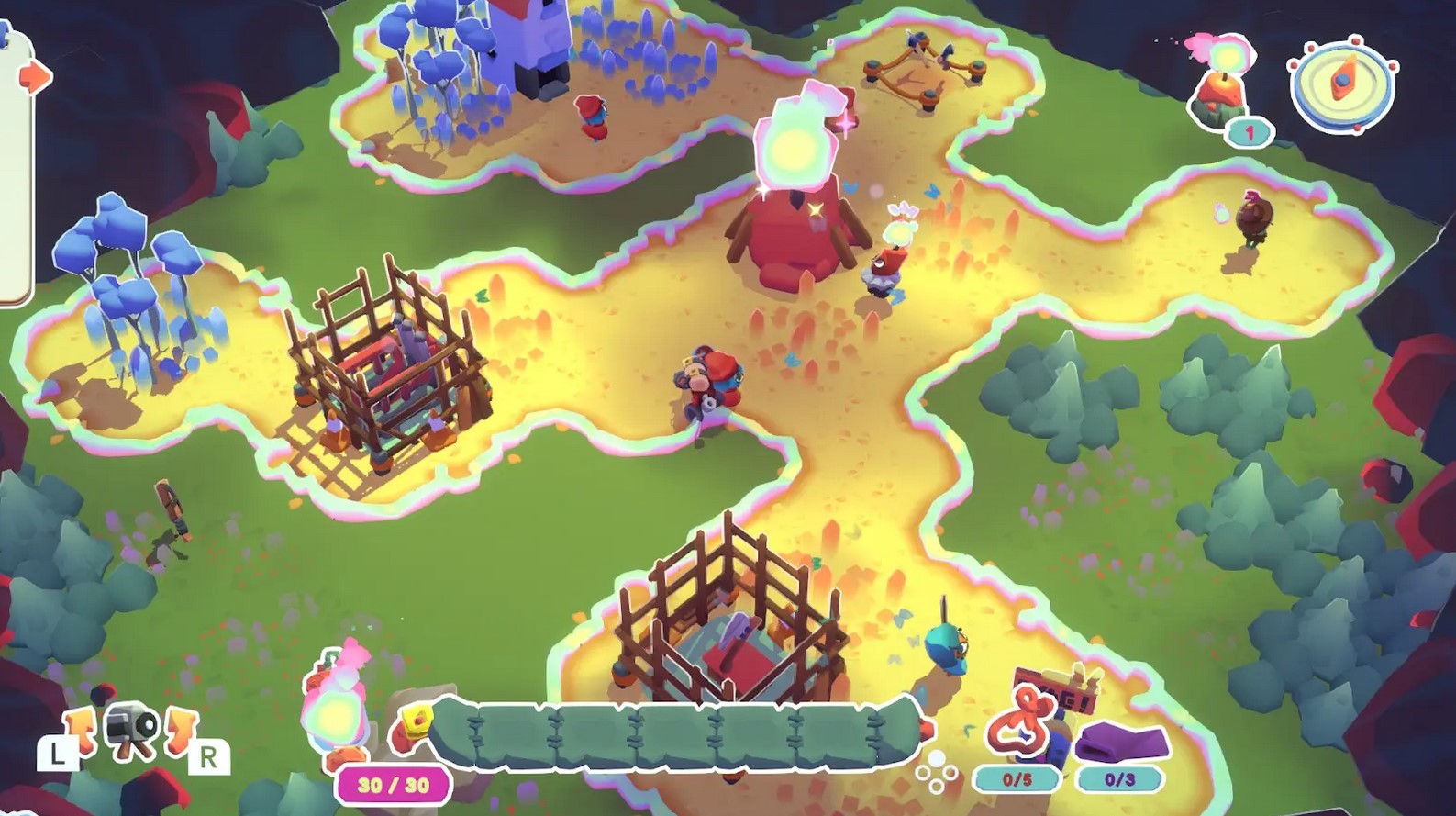
Into the Emberlands is a cozy rogue-lite exploration game developed by Tiny Roar and published by Daedalic Entertainment. It is currently available on PC, Steam Deck, and Nintendo Switch. We appreciate Maurice Hagelstein for taking the time to answer our questions.
Thanks! Do share your feedback with us. ⚡
How can we make this post better? Your help would be appreciated. ✍


